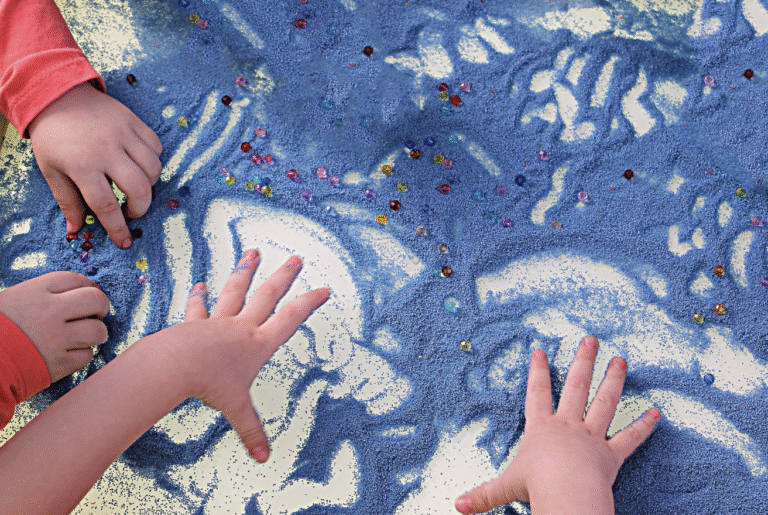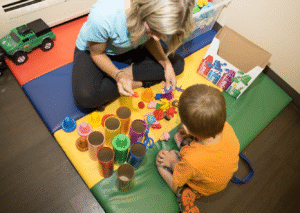Understanding the Role of PT in Fine Motor Development
When most people think of physical therapy (PT), they picture big movements: jumping, walking, balancing, climbing stairs. But here’s something many don’t realize—PT plays a powerful role in helping kids with the small stuff, too. We’re talking about the fine motor skills that make it possible to hold a pencil, tie a shoe, cut with scissors, or even feed oneself.
These small, precise movements are often assumed to be the domain of occupational therapy—and it’s true, OT plays a big role. But physical therapy helps lay the foundation that fine motor skills are built upon. And for kids with neuromotor conditions, developmental delays, or sensory processing differences, that foundation is everything.
At Crawl Walk Jump Run Therapy Clinic, we know that fine motor skills start in the core, shoulders, posture, and body awareness. Here’s how physical therapy contributes to these essential life skills in real, tangible ways.
What Exactly Are Fine Motor Skills?
Fine motor skills involve the use of small muscles—especially those in the hands, fingers, and wrists. But it’s not just about muscle movement. These skills also require:
- Hand-eye coordination
- Motor planning (thinking about and carrying out movements)
- Postural control (staying upright and stable)
- Sensory processing (how the brain interprets touch, movement, and position)
Everyday fine motor tasks might include:
- Holding and using a crayon or pencil
- Fastening buttons or zippers
- Picking up small items like coins or beads
- Using utensils at mealtime
- Turning pages of a book
- Assembling puzzles or manipulating small toys
To an adult, these seem like second nature. But for a child with physical or developmental challenges, these tasks can feel frustrating, fatiguing, or even impossible—especially if they don’t have the physical foundation to support them.
How Physical Therapy Builds Fine Motor Readiness
Here’s a deeper look at the ways PT helps prepare the body for the “small stuff.”
1. Core Strength and Stability
Before a child can focus on what their hands are doing, they need to be able to sit upright without slumping, shifting, or tiring quickly. That all starts with core strength.
A strong core allows a child to maintain a stable seated position, freeing up the arms and hands for more precise movements. Without core control, they may lean on one arm, slouch, or constantly reposition themselves, making it harder to focus on the task at hand.
Therapists use fun, active movements like balance games, crawling, and ball exercises to strengthen the core without it feeling like a workout.
2. Shoulder and Upper Arm Control
Fine motor skills rely on something called a proximal-to-distal development pattern, meaning kids gain control of big muscle groups first, and small ones later. Before fingers can move with purpose, the shoulder girdle and upper arm must be strong and stable.
If a child lacks shoulder stability, writing, drawing, and feeding can become clumsy or tiring. They may grip a pencil too tightly or struggle to move their hands with accuracy.
Weight-bearing activities like crawling, wheelbarrow walks, or pushing against resistance help build endurance and stability in the upper body.
3. Postural Alignment and Control
A child’s ability to sit upright, keep their head steady, and stay balanced affects everything from visual tracking to bilateral coordination (more on that in a moment).
Poor posture can lead to compensations—like resting an arm on the table or leaning heavily to one side—that interfere with using the hands effectively.
Therapists guide children through positioning and activities that retrain posture while they move—often through obstacle courses, scooter games, or seated balance tasks.
4. Bilateral Coordination
Many fine motor tasks require both sides of the body to work together—like holding paper with one hand while cutting with the other.
Children with weak bilateral coordination may avoid or struggle with two-handed tasks like tying shoes, buttoning shirts, or catching balls.
PTs often incorporate crawling, climbing ladders, tossing games, or tasks that involve crossing the midline (reaching across the body) to build this critical skill.
5. Sensory Processing and Motor Planning
Some kids have difficulty interpreting the sensory information their body gives them—like where their limbs are in space or how much pressure to apply when holding an object. This affects both gross and fine motor abilities.
Sensory processing and motor planning are at the core of doing anything on purpose. Without these, a child may avoid touch, fear movement, or have trouble initiating tasks.
Physical therapists offer sensory-rich environments that help kids explore movement safely. Swinging, bouncing, jumping, and deep pressure activities help improve proprioception (body awareness) and motor planning abilities.
When Physical Therapy and Occupational Therapy Work Together
Occupational therapy is typically where fine motor skill-building lives. But physical therapy gets the body ready for that work. When PT and OT collaborate, kids make faster and more sustainable gains.
A dual-therapy approach might look like this:
- PT strengthens the body’s base: posture, balance, coordination
- OT focuses on task-specific skills: writing, feeding, dressing
- Together, they reinforce progress through a shared treatment plan
Conditions that benefit from this approach include:
- Cerebral palsy
- Autism spectrum disorder
- Down syndrome
- Genetic or neuromuscular disorders
- Developmental coordination disorder (DCD)
The combination of therapies allows children to make gains not just in movement, but in independence, confidence, and daily life participation.
What Parents Can Do at Home
You don’t need a therapy degree to support your child’s fine motor development at home. Here are a few tips from our team:
- Play on the floor: Encourage crawling, reaching, and tummy time—even for older kids.
- Use vertical surfaces: Have your child color or play with magnets on a vertical board or wall to build shoulder strength.
- Get outside: Playground equipment naturally promotes bilateral coordination and core control.
- Let them help with chores: Activities like pouring, stirring, or opening containers build hand strength and coordination.
- Take your time: Encourage independence with dressing, feeding, or brushing hair. It might take longer—but it’s meaningful practice.
The Power of PT
Fine motor skills don’t begin in the fingers. They begin with strength, stability, posture, and sensory readiness—areas where physical therapy plays a critical role. For children who face physical or developmental challenges, that extra layer of support can mean the difference between struggle and success.
At Crawl Walk Jump Run Therapy Clinic, we focus on how movement supports function, independence, and joy. Whether your child is struggling with handwriting, self-care, or school participation, we’re here to help build the foundation they need to thrive.
Want to learn more?
Call us at (586) 323-2957 to schedule a consultation and discover how physical therapy can support your child’s fine motor development—from the inside out.




